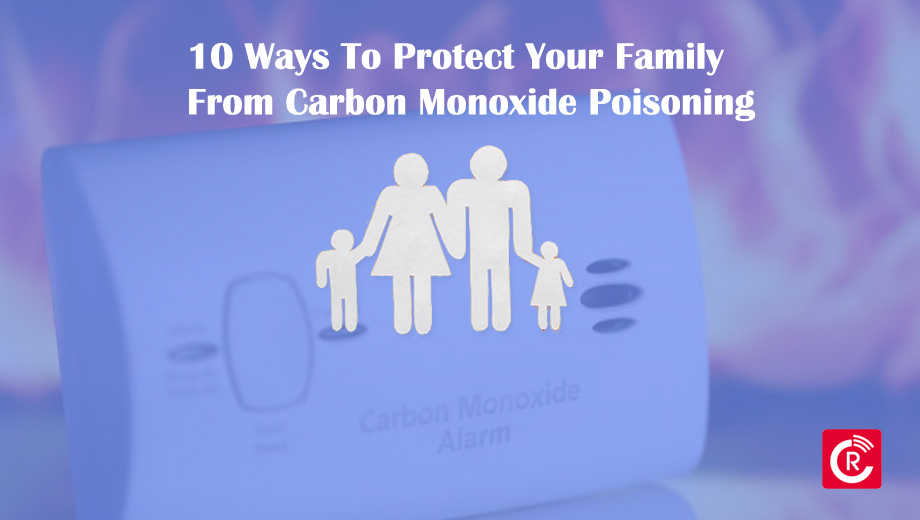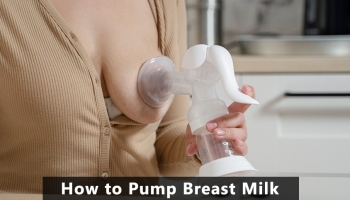
Carbon monoxide (CO) poisoning is a silent killer; you won’t even come to know until it is too late!
Every year at least 430 people die of CO poisoning in the US. The reported cases of CO poisoning are more than 50,000 in a year, and most of these were those who were on emergency medical treatment.
CO is present in fumes produced in household furnaces, charcoal burners, car exhausts, kerosene stoves, portable generators, and many household things you can think of. It may scare you, but simple safety measures are good enough to protect you and your family.
Symptoms of CO Poisoning
The most common symptoms of CO poisoning are dizziness, headache, nausea, confusion, vomiting, and chest pain. The biggest threat is for sleeping children or intoxicated people; they may die in their sleep before anyone comes to know. Even older adults are at high risk of CO poisoning.
Here are ten safety precautions to protect yourself and your family from CO poisoning.
Get your Heating Appliances Checked
It is a good practice to get all your heating appliances serviced every year. It will not only keep them in working order but will also improve their efficiency. The biggest threat of CO leaks is through a leaking furnace, wood stove, or kerosene heater. Inspect your appliances for any cracks, dents, or rust regularly. It is also imperative to regularly clean your appliances since blocked vents may cause CO leaks.
It may look cumbersome, but regular maintenance, periodic checks, and regular cleaning will save your life. It is also good to ask the maintenance technician about the safety precautions and when you should buy a new one.
Install CO Monitors
If you haven’t installed a CO monitor in your house, do it as soon as possible. It is also advisable to get an installation check done by experts regarding installing these CO monitors. Choose a good and efficient monitor which can detect at 15 PPM (parts per million cubic meter). The monitors must have an audio alarm to alert once the threshold level of 35 PPM is crossed.
CO monitors are critical because CO tends to get absorbed in human blood like oxygen. CO poisoning, in most cases, goes undetected for a long time until it becomes an emergency. Installing CO detectors at important locations in your house will prepare you from the silent threat and significantly reduce the hidden dangers for you and your family.
Get your CO Monitors Tested at Regular Intervals
Once you have installed the CO monitors, half the job is done, but you need to ensure the monitors are always working. Get those monitors checked regularly to ensure they are efficient; you may also like to test them yourself to know they are working well.
Different models may have different check procedures, but checking your CO monitors is not an arduous task. The monitors look for CO traces to set up the alarm system. The monitor must trace even low levels of CO since even a low level of CO in the blood can prove to be fatal or cause severe damage.
Vent your Fuel-Burning Appliances
Anything that burns inside your house must have a free vent channel outside. A good venting system will ensure the safe exit of CO gas from your house. Ensure all appliances such as a fireplace, ovens, dryers, water heaters, and gas furnaces are all vented.
Never keep your car running in a closed garage; it is unsafe even if the garage door is open. Check your vents regularly for any blockages or malfunctioning. Space heaters lack vent; ensure your door and windows are open whenever you use them.
Make an Emergency Exit Plan
You must be familiar with an emergency exit plan in apartments and hotels. If you think it is only required in a bigger building, you may be wrong. You must have an emergency exit plan for your house, especially if you have only a single entry.
All your family members must know what is to be done if the CO monitor alarm rings. They must know the safest exit route, the drills, and safety precautions to be followed; practice emergency drills, ensure every member of the house is aware of the route and designated meeting place once they escape out.
Minimize your CO Exposure
One of the best ways to protect your family from CO poisoning is by getting UI-listed appliances. Purchasing authentic appliances will keep you and your family safe from unexpected leaks or lousy venting. Also, ensure you are not burning charcoal grills for barbeque inside your house.
Even if you keep doors and windows open, there is always a risk of CO poisoning. If your garage is sharing a wall with your house, make sure all gaps are sealed. To be on the safer side, never run your car inside the garage.
Keep your Gas Dryer Clean
The lint in your gas dryer can cause a danger for CO poisoning. The bunnies inside the vent pipes are a threat to fire, and it may also cause a CO leak inside the house. Make sure to replace those bunnies every year. Cleaning the vents and pipes frequently is a good habit.
Never Leave a Doubt
If you have the slightest of doubt that your CO monitor is not working or needs battery replacement, get it checked! Test your detector; if you think you will not be able to do it, call an expert. If you feel there is a venting problem or a damaged vent pipe, get it checked thoroughly. If your detectors need replacement, don’t delay. It is good to be cautious and alert.
Identify CO Poisoning Signs
CO is an odorless and colorless gas that goes into your bloodstream with ease. Knowing the leaks without a detector is difficult, and at times it has been noticed that people exposed to CO never realize they are at risk. The only way you can be aware of CO poisoning is by signs like dizziness, shortness of breath, nausea, headache, and confusion. Watch out for these signs and educate your family and children about the symptoms of CO poisoning.
If Exposed, Get Medical Help
If you or any of your family members are exposed to CO even after taking all precautions, the immediate action is to get fresh air. Turn off the combustion, open all doors and windows and move out in fresh air. Go to an emergency room and tell the doctor you suspect CO poisoning.
In case you are with older adults in the home, call 911 and get help. A simple blood test can detect CO poisoning.
Conclusion
The biggest danger of CO is that you cannot smell it; more than that, it can mix with your blood in quick time which can be lethal. CO is produced in places where there is combustion. Take care of all your heating appliances and furnaces to eliminate the dangers of CO.
Inspect your appliances regularly, install CO monitors and educate all members about the escape plan and immediate action. These simple steps will keep you and your family safe from the dangers of CO poisoning.





